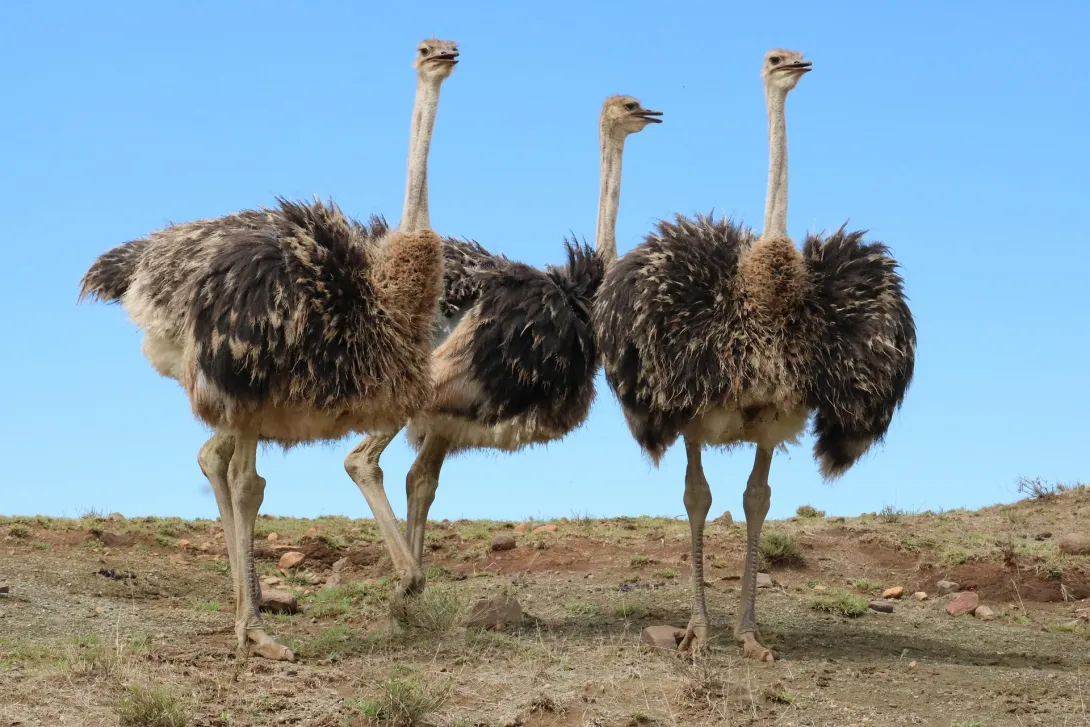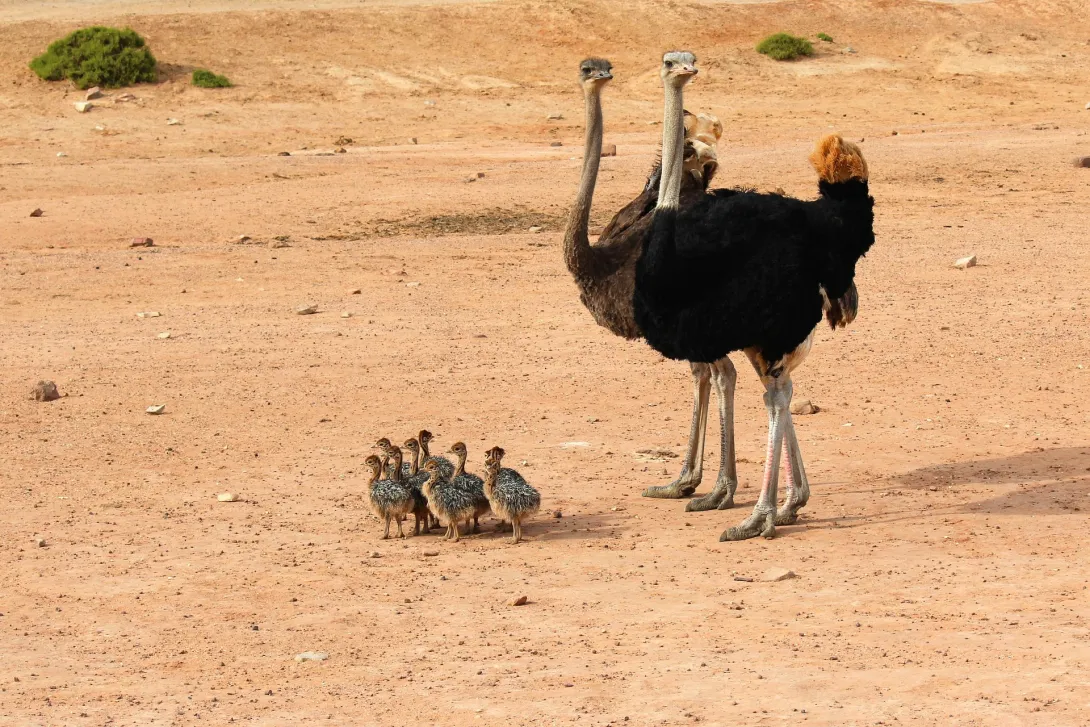Skip to main content
Introduction
- The Ostrich (Struthio camelus) is the largest and heaviest living bird on Earth.
- They are flightless birds native to Africa, known for their speed, powerful legs, and distinctive appearance.
- Ostriches belong to the ratite group of birds, which also includes emus and kiwis.
Physical Characteristics
- Ostriches stand 7 to 9 feet (2.1 to 2.7 meters) tall and weigh between 220 to 350 pounds (100 to 160 kg).
- They have long, muscular legs adapted for running, with two-toed feet (most birds have three or four toes).
- Their wings are small and not used for flight but help with balance and courtship displays.
- Ostriches have the largest eyes of any land animal, measuring 2 inches (5 cm) in diameter.
Habitat and Distribution
- Ostriches are native to Africa, primarily found in savannas, deserts, and open woodlands.
- They thrive in arid and semi-arid regions, where water is scarce.
- Ostriches are nomadic, often moving in search of food and water.
Diet and Foraging
- Ostriches are omnivorous, feeding on plants, seeds, insects, and small vertebrates.
- They swallow pebbles and sand to help grind food in their gizzard, a muscular stomach.
- Ostriches can survive without water for long periods by extracting moisture from food.
- They are opportunistic feeders, eating whatever is available in their environment.
Behavior and Communication
- Ostriches live in small flocks of 5 to 50 birds, often mixing with other grazing animals like zebras.
- They communicate through booming calls, hisses, and body language.
- Ostriches are territorial, especially during breeding season.
- Contrary to myth, ostriches do not bury their heads in the sand—they lie low to avoid detection.
Reproduction and Lifespan
- Male ostriches perform a courtship dance, flapping wings and swaying to attract females.
- A dominant male mates with multiple females, who lay eggs in a communal nest.
- Ostrich eggs are the largest of any bird, weighing 3 pounds (1.4 kg) and measuring 6 inches (15 cm) in diameter.
- Ostriches can live up to 40 to 45 years in the wild and 50+ years in captivity.
Unique Adaptations
- Ostriches can run at speeds of 45 mph (72 km/h), the fastest of any bird.
- Their powerful legs can deliver lethal kicks to predators like lions.
- They have three stomach compartments to digest tough plant material.
- Ostriches can tolerate extreme temperatures, from below freezing to over 120°F (49°C).
Economic Importance
- Ostriches are farmed for meat (lean and high in protein), leather, and feathers.
- Their feathers are used for decorations, dusters, and fashion.
- Ostrich oil is used in cosmetics and medicinal products.
Conservation Status
- Ostriches are classified as Least Concern by the IUCN but face threats from habitat loss and hunting.
- Some subspecies, like the Arabian Ostrich, are extinct in the wild.
Fun Facts
- Ostriches can cover 10 to 16 feet (3 to 5 meters) in a single running stride.
- Their eggs are so strong they can support the weight of a human adult.
- Ostriches have no teeth—they swallow food whole.
- They are the only birds with two toes on each foot.
- Ostriches can go without water for several days.

